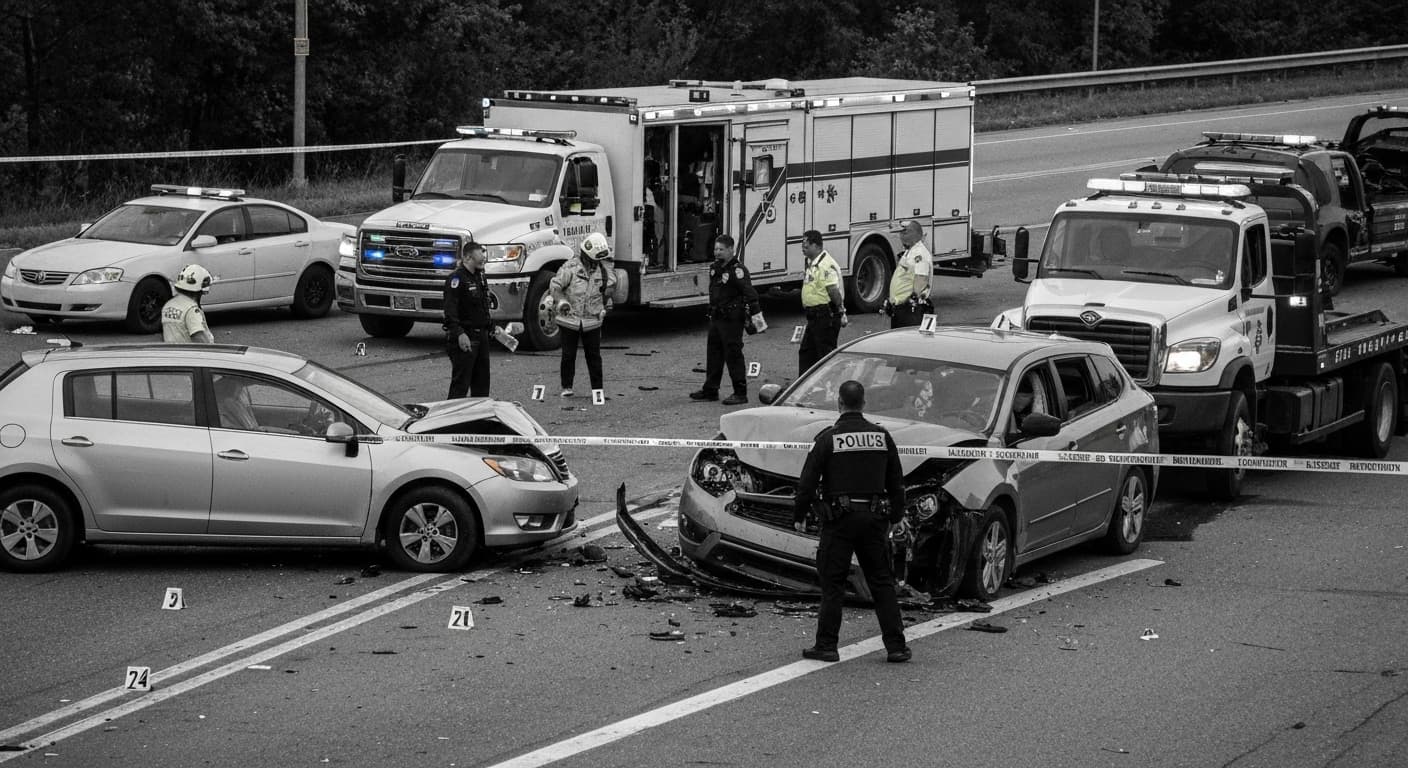
Should You Stay in Your Vehicle After a Car Accident?
Learn when to stay in your vehicle after a car accident and when to exit safely, based on traffic conditions and injury assessment.
# Should You Stay in Your Vehicle After a Car Accident?
Whether to stay in your vehicle after an accident depends on safety factors, injury status, and traffic conditions. The decision should prioritize your safety and that of others involved.
When to Stay in Your Vehicle
Heavy Traffic Situations
Stay Inside If:
- Accident occurred on busy highway
- Fast-moving traffic nearby
- Limited shoulder space
- Poor visibility conditions
- Multiple lanes of traffic
Suspected Serious Injuries
Don't Move If:
- You suspect spinal injuries
- You feel severe pain
- You're dizzy or disoriented
- Moving increases pain
- You have numbness or tingling
Unsafe Exit Conditions
Remain Inside When:
- Vehicle doors face traffic
- No safe place to stand
- Weather creates hazards
- Other vehicles still moving
- Emergency vehicles approaching
When to Exit Your Vehicle
Fire or Fuel Leak Danger
Exit Immediately If:
- You smell fuel
- You see smoke or flames
- Electrical sparking occurs
- Vehicle is severely damaged
- Airbags deployed and won't deflate
Safe Exit Conditions
Exit When:
- You can safely reach shoulder
- Traffic has stopped
- You're not seriously injured
- Vehicle is stable
- Help is needed outside
Minor Accidents
Usually Safe to Exit:
- Low-speed collisions
- Parking lot accidents
- Residential street accidents
- When vehicles can be moved
Safety Considerations
Assess Your Condition
Check For:
- Head or neck pain
- Back discomfort
- Difficulty moving
- Dizziness or confusion
- Any pain or numbness
Evaluate Surroundings
Look For:
- Traffic patterns
- Safe exit routes
- Emergency vehicles
- Other hazards
- Available help
Vehicle Stability
Ensure:
- Vehicle won't roll
- No immediate fire danger
- Doors can open safely
- No electrical hazards
- Structure is stable
If You Stay Inside
Safety Measures
Take These Steps:
- Turn on hazard lights
- Call 911 if needed
- Stay calm and alert
- Monitor your condition
- Communicate with others
Communication
Stay in Contact:
- Call for help
- Signal to other drivers
- Communicate with passengers
- Update emergency services
- Coordinate with other parties
Wait for Help
Be Patient:
- Don't rush to exit
- Wait for traffic to clear
- Let emergency responders assess
- Follow professional guidance
If You Exit
Safe Exit Strategy
Exit Carefully:
- Check mirrors before opening doors
- Exit away from traffic
- Move quickly to safety
- Help passengers if needed
- Stay visible to other drivers
Where to Go
Move To:
- Behind barriers if available
- Well away from traffic
- Visible but safe location
- Where you can help others
- Where emergency vehicles can reach you
What to Bring
Take With You:
- Cell phone
- Insurance information
- Driver's license
- Emergency supplies
- Important medications
Special Situations
Highway Accidents
Extra Precautions:
- Traffic moves at high speeds
- Limited safe areas
- Poor visibility possible
- Multiple vehicles involved
- Emergency vehicle access needed
Weather Conditions
Consider:
- Rain or snow affecting visibility
- Ice making walking dangerous
- Wind affecting stability
- Temperature extremes
- Reduced traction
Night Accidents
Additional Risks:
- Reduced visibility
- Harder for others to see you
- Limited lighting
- Increased traffic dangers
- Difficulty assessing damage
Helping Others
If Others Are Trapped
Your Role:
- Call for professional help
- Provide comfort and reassurance
- Don't attempt to move injured persons
- Monitor their condition
- Relay information to responders
Passenger Considerations
Help Passengers:
- Assess their injuries
- Assist safe exit if appropriate
- Keep them calm
- Ensure their safety
- Get medical help if needed
Emergency Services Guidance
Follow Instructions
When Help Arrives:
- Listen to professional guidance
- Follow evacuation instructions
- Provide requested information
- Stay out of the way
- Cooperate fully
Medical Assessment
Allow Professionals To:
- Evaluate your condition
- Determine if movement is safe
- Provide appropriate care
- Make transport decisions
- Document injuries
Common Mistakes
Don't Rush
Avoid:
- Hasty decisions
- Ignoring safety factors
- Moving when injured
- Exiting into traffic
- Panicking
Don't Assume
Don't Think:
- You're not injured
- It's safe to move
- Others will see you
- Minor accidents are always safe
- You must exit immediately
Legal Considerations
Duty to Render Aid
You Must:
- Help injured persons if safely possible
- Call for emergency assistance
- Provide reasonable aid
- Not abandon the scene
Documentation Needs
Even If Staying Inside:
- Take photos if possible
- Exchange information
- Get witness contacts
- Note important details
- Cooperate with police
Conclusion
The decision to stay in or exit your vehicle after an accident should be based on safety considerations, not convenience. When in doubt, prioritize safety and wait for professional guidance.
If you're seriously injured or in immediate danger, call 911 and follow their instructions. If the situation is stable, take time to assess before making your decision.
Remember that your safety and the safety of others should always be the primary concern.
Key Principle: When safety is uncertain, err on the side of caution and seek professional guidance.
---
Need guidance after an accident? Contact emergency services first, then consult with an experienced car accident attorney to protect your rights.


